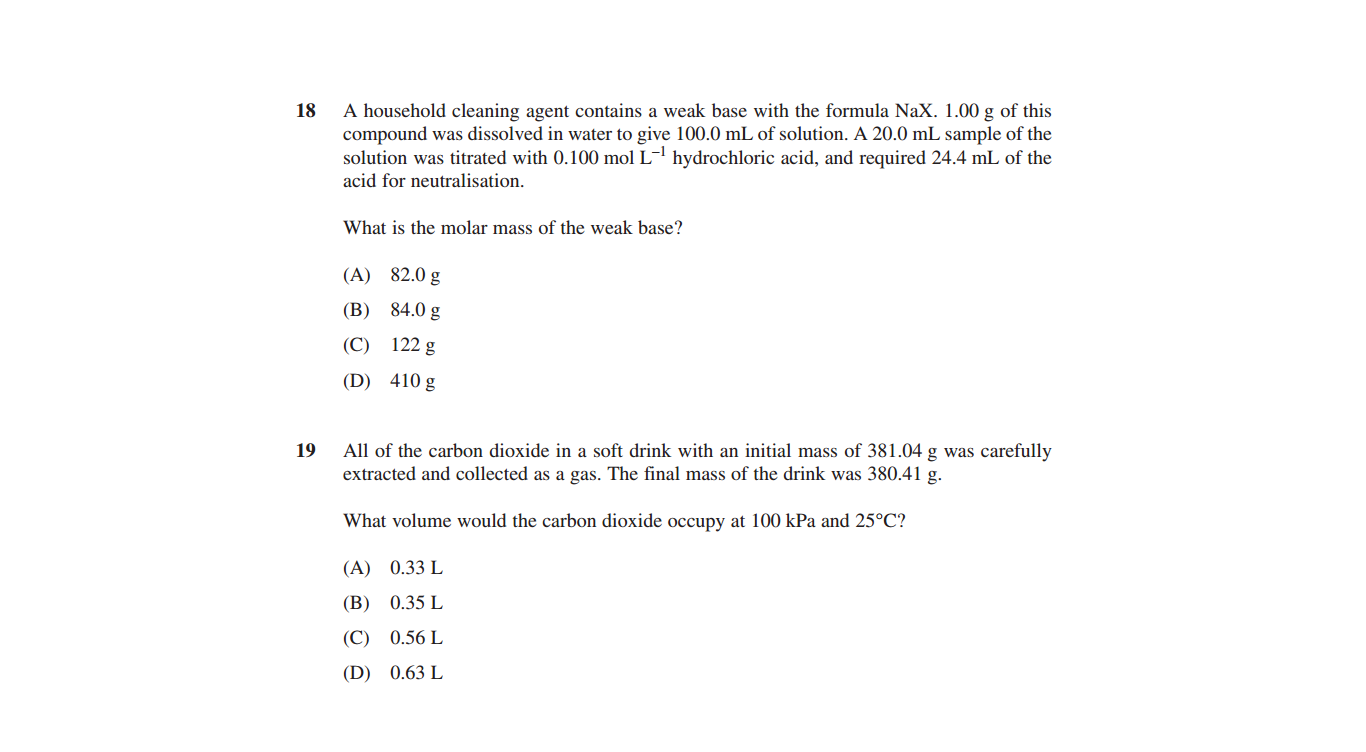re: HSC Chemistry Marathon Archive
"Ethylene is such an important starting material for the chemical industry." Assess this statement,include relevant chemical equations, and a description of new materials and fuels that can be prepared from ethylene.(7 marks)
FTFY.
Ethylene is indeed one of the most important starting materials for the chemical industry. This is because it can be used t make a variety of useful substances, as it has a highly reactive double bond of high electron density, across which smaller molecules and electronegative elements can attach to. Some of the most useful substances and products made include Ethanol, Polyethylene, Styrene and Vinyl Chloride.
Ethanol
Ethylene can be used to make ethanol, one of the largest industrial solvents. Ethanol can also be used to make other chemical substances. Through the reaction of ethylene with steam and dilute sulfuric acid catalyst, (the hydration of ethylene), ethanol is made.
This is seen through the equation: CH2=CH2 (g) + H2O (g) ---dilute H2SO4---> CH3-CH2-OH (g).
Ethanol is also the ONLY fuel that can be created from ethylene. This however, is not beneficial to us as it does not solve the problem of the depleting petroleum source, as ethylene comes from the fractional distillation of Petroleum followed by catalytic cracking of higher chained hydrocarbons. Hence, ethylene is not an important starting material in the making of fuels.
Polyethylene
Ethylene can make Polyethylene through an addition reaction of the monomer ethylene. The most common types of Polyethylene which can be produced are HDPE and LDPE, the difference being that HDPE production uses a Ziegler Natta catalyst. Some other types of Polyethylene produced include LLDPE, VLDPE, XLPE, MDPE, HDXLPE, UHMWPE, ULMWPE, HMWPE, and CPE, hence showing the vast range of products which can be produced from ethylene.
The equation is as shown: CH2=CH2 + CH2=CH2 + ..... --> (CH2+CH2)n.
Polyethylene is a 'new material' made by ethylene and is used significantly in the plastic material. Some examples include use in plastic bottles, plastic bags, plastic containers, plastic films and many other plastic materials.
Vinyl Chloride and Styrene
Can't be bothered to do this one properly.
But basically, mention reactive double bond of ethylene allows molecules like benzene ring, and also electronegative substances like Cl to be attached, forming Styrene (ethylbenzene) and Vinyl Chloride (chloroethene) monomers respectively. When addition reaction of those monomers occur it forms PolyStyrene and PVC which are very useful materials. PVC numerous uses including pipes, wire and cable coatings, and packaging materials. Polystyrene uses: foam cups, clear CD cases, plastic cutlery and dinnerware.
Add a chemical reactions of the polymerisation of both. As seen these new materials produced from ethylene have numerous uses.
Assessment: Overall, it can be seen that Ethylene is indeed an important starting material for the chemical industry producing many new materials such as Ethanol, poylethylene, Styrene and Vinyl Chloride, which are used extenisvely in society. Hence, this statement is most definitely true. However, the only fuel produced from ethylene is ethanol, which is better produced through the fermentation of glucose in order to save limited petroleum sources, hence ethylene is not important in developing fuels.




